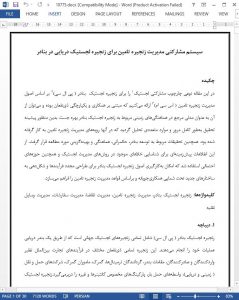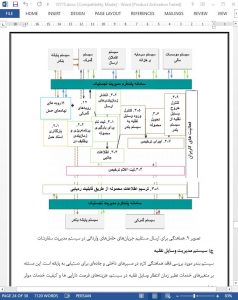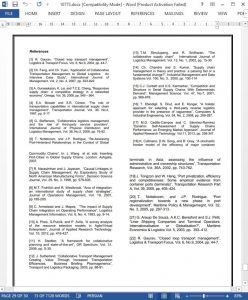Abstract
In this article we propose a collaborative logistics framework for a Port Logistics Chain (PLC) based on the principlesof Supply Chain Management (SCM) that rely on stakeholders integration and collaboration, providing a referencemodel for the inland coordination of the PLC. A comprehensive literature review was conducted, analyzing severalcases in which SCM practices have been implemented as well as studies related to port development, governance,coordination and best practices associated. This background information was used to identify current gaps in logisticsmanagement practices and potential scopes of intervention within the PLC to suggest a redesign process andconfigure new structures under a collaborative scheme, following the guidelines of SCM.
1. Introduction
A port logistics chain (PLC) embraces all the global logistics chains that operate through a seaport, including different stakeholders involved in the international trade processes, such as the importers and exporters, the Port Authority, the terminal operators, customs, customs agents, transport companies (ground and maritime), freight forwarders, empty container parks, etc. The PLC faces important challenges for the integration of those supply chains processes and the huge number of public and private stakeholders. Another challenge faced by the PLC is the existence of several sources of variability that affect the import and export flows.
6. Conclusiones and Recommendations for further research
A Collaborative Logistics Framework for a port logistics chain is presented based on the application of SCM principles that rely on an integral improvement of the multi-enterprise operations, based on the integration of the business processes of the PLC with its stakeholders. This new approach aims to provide a reference model for the coordination of the PLC in terms of infrastructure, common resources, and the information that supports collaborative decisions making.
The proposed collaborative framework comprises three main dimensions: the Management of Port Logistic Governance, (b) the Logistics Management Platform System (LPMS) and (c) the Port Logistics Operations Model. The framework is focused on the design and implementation of the three inter-enterprise business processes of the PLC: demand management, orders management, and vehicles management. These collaborative processes are developed at a tactical (planning and scheduling) and operational (control and execution) levels. The global objective of these inter-enterprise processes is the coordination of common resources and the reduction of operational variability.











